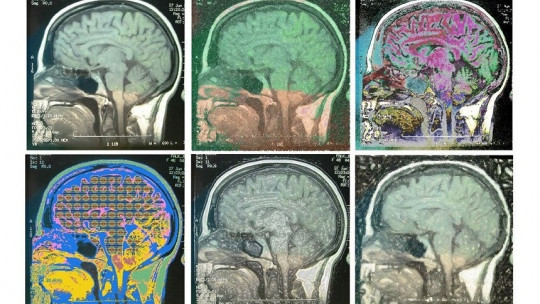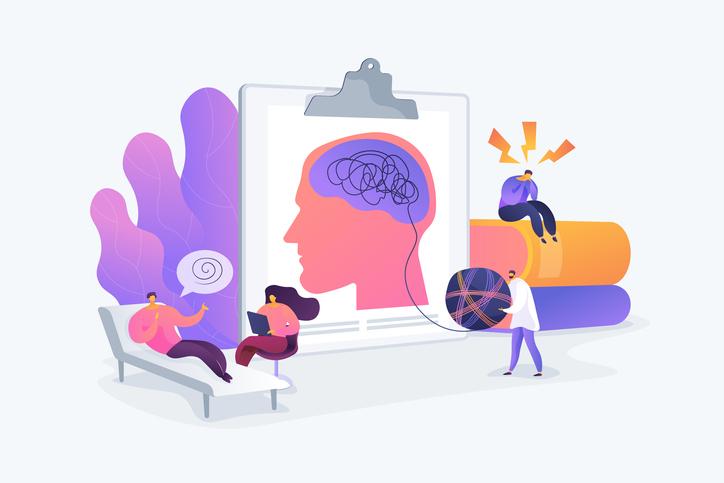We know little about that energy that drives us and encourages us to pursue a goal. Motivation according to psychology is a key element in our psychological well-being and it is very important to study both its definition and all the types of motivation that exist. Whether it’s intrinsic, extrinsic motivation work or learning motivation, this process helps us achieve our short and long-term objectives.
In the following PsychologyFor article, we will review the Types of motivation in psychology: their definition and examples. In this way, you will be able to analyze what your main motivation in life is and what type of goals you want to achieve
Motivation is a fundamental concept in psychology that refers to the internal processes that energize, direct, and sustain behavior towards achieving specific goals or satisfying psychological needs. It plays a crucial role in shaping human behavior, influencing individuals’ choices, actions, and persistence in pursuing desired outcomes. We delve into the nature of motivation, its underlying theories, and its implications for understanding human behavior and fostering personal growth.
What is motivation
The word motivation has its origin in the Latin words motus (moved) and motive (movement), so we can understand that motivation is related to the impulse of the individual to perform certain acts.
First of all, it is important to define what we understand as motivation today. This definition has undergone different changes according to the authors who have studied this phenomenon. However, we can highlight the following statement:
We understand motivation as a energy that activates us, move and orient our actions towards a aim Specifically, this objective is related to the satisfaction of our needs like human beings.
Once we understand the definition of motivation, we are going to list the types of motivation in psychology and then define them:
- Intrinsic motivation
- Extrinsic motivation
- Positive motivation
- Negative motivation
- Personal motivation
- Secondary motivation
- Ego-centered motivation
- Task-focused motivation
The different theories of motivation according to authors
As we have mentioned previously, each author has provided their own definition and classification of this phenomenon known as motivation. Among all the theories, we can highlight three great authors:
Abraham Maslow and the hierarchy of needs
For Abraham Maslow, motivation can be defined as the impulse that human beings have to satisfy their needs. These needs are distributed hierarchically in the form of a pyramid, starting with the most basic needs such as eating and drinking until reaching higher needs for self-actualization. If you want to know more about this theory, you can consult the following article on Maslow’s Pyramid: practical examples of each level.
Motivation according to McClelland
David McClelland states that a person’s motivation is defined by the search or satisfaction of three basic needs:
- Need for achievement
- Need for power
- Membership need
Herzberg’s motivation-hygiene theory
One of the most used models in the world of business psychology and coaching is Herzberg’s motivation-hygiene theory. This expert in work motivation affirms that the factors that encourage an individual and keep him oriented to be productive are the following:
- Motivating factors: increase individual satisfaction
- Hygiene factors: They keep the individual away from dissatisfaction.
Theories of Motivation
1. Instinct Theory
Instinct theory posits that behavior is driven by innate, biologically determined instincts or fixed patterns of behavior that are characteristic of a species. Instincts serve as automatic, unlearned responses to specific stimuli and are thought to underlie basic survival and reproductive behaviors.
2. Drive Reduction Theory
Drive reduction theory suggests that motivation arises from the desire to maintain homeostasis or equilibrium within the body by reducing physiological imbalances or drives such as hunger, thirst, or arousal. When individuals experience a physiological need or deficiency, they are motivated to engage in behaviors that satisfy those needs and restore internal balance.
3. Arousal Theory
Arousal theory proposes that individuals are motivated to maintain an optimal level of arousal or stimulation in order to maximize performance and well-being. According to this theory, people seek out activities and experiences that provide an optimal level of arousal, balancing between periods of stimulation and relaxation based on individual preferences and personality traits.
4. Incentive Theory
Incentive theory suggests that behavior is motivated by the anticipation of rewards or incentives that are associated with particular actions or outcomes. Individuals are motivated to engage in behaviors that are likely to lead to desirable consequences or outcomes, whether they are tangible rewards such as money or praise, or intrinsic rewards such as personal satisfaction or enjoyment.
5. Cognitive Theory
Cognitive theories of motivation emphasize the role of beliefs, expectations, and cognitive processes in shaping behavior. According to these theories, individuals are motivated to pursue goals that align with their beliefs, values, and self-concept. Cognitive factors such as self-efficacy, goal-setting, and attributions play a central role in determining motivation and achievement.
Factors Influencing Motivation
1. Biological Factors
Biological factors such as genetics, neurochemistry, and physiological needs can influence motivation by shaping individuals’ predispositions, preferences, and responses to environmental stimuli. For example, genetic factors may influence susceptibility to certain motivational disorders such as depression or addiction.
2. Psychological Factors
Psychological factors such as beliefs, attitudes, emotions, and personality traits can influence motivation by shaping individuals’ perceptions, priorities, and goals. For example, individuals with high levels of self-efficacy and optimism are more likely to be motivated to pursue challenging goals and persist in the face of obstacles.
3. Environmental Factors
Environmental factors such as social norms, cultural values, peer influences, and situational contexts can influence motivation by providing opportunities, incentives, and constraints on behavior. For example, social support and encouragement from peers and mentors can enhance motivation, while negative feedback or environmental stressors can undermine motivation.
Implications for Personal Growth and Well-being
1. Goal Setting
Understanding the principles of motivation can help individuals set meaningful, achievable goals that align with their values, interests, and aspirations. By setting specific, challenging goals and developing action plans to achieve them, individuals can enhance motivation, persistence, and success in pursuing personal growth and development.
2. Self-Regulation
Motivation plays a key role in self-regulation, the ability to monitor, regulate, and control one’s thoughts, feelings, and behaviors in pursuit of long-term goals. By cultivating self-awareness, self-monitoring, and self-control skills, individuals can enhance their ability to manage impulses, overcome obstacles, and maintain focus and effort towards desired outcomes.
3. Intrinsic Motivation
Fostering intrinsic motivation, the desire to engage in activities for their own sake, can promote greater satisfaction, engagement, and well-being in various domains of life. By nurturing intrinsic motives such as autonomy, competence, and relatedness, individuals can cultivate a sense of enjoyment, mastery, and fulfillment in their pursuits, leading to greater overall happiness and life satisfaction.
Intrinsic motivation and extrinsic motivation
Once we know the main theories of motivation, it is time to define the types of motivation in psychology What is your main motivation in life?
Intrinsic motivation
Considered as a type of positive motivation (which we will define later), intrinsic motivation is that related to our internal desires and impulses.
As its name indicates, intrinsic motivation It comes from ourselves and is aimed at exploring, learning and obtaining satisfactory internal rewards (pleasure, tranquility, happiness,..). According to many psychological theories, when a person is intrinsically motivated, they are more likely to maintain said motivation at a high level and thus achieve their goals.
Extrinsic motivation
In this case, despite having a positive orientation, extrinsic motivation It has its origin outside of us, that is, it is induced by our environment. This type of motivation in psychology is defined as those impulses and elements from the outside that raise our motivation and direct actions towards the pursuit of a positive external stimulus (prizes, money, social acceptance..)
For the motivation in learning, intrinsic motivation is more effective. However, the education system often rewards extrinsic motivation in learning.
Types of motivation: positive and negative
Another way to classify the types of motivation in psychology is by analyzing the reward sought in the actions, that is, whether we obtain something positive or prevent something negative from happening to us.
Positive motivation
As its name indicates, this type of motivation is defined as the search for a positive reward. Let’s take an example:
- People who are playing the lottery every day have a positive extrinsic motivation (they look for an external positive reward: money)
Negative motivation
In this case, the actions caused by motivation will be aimed at avoiding a negative stimulus (pain, failure, loss of money..). For example:
- When we are in danger, our motivation to run away is negative intrinsic (we want to avoid putting our physical integrity at risk)
Personal motivation vs social motivation
Another way to classify motivation is by analyzing the consequences of actions: whether they are positive for the individual themselves or whether they are a social reward.
Personal or primary motivation
This type of motivation is purely intrinsic and is characterized by the fact that the reward is aimed at satisfying an individual’s own need, be it food, water, well-being, pleasure..
Secondary motivation
On the other hand, if intrinsic motivation is aimed at achieving well-being through others, it is known as secondary or social motivation. This type of motivation is somewhat more complex to analyze because the rewards are difficult to measure, among them we highlight:
- The feeling of security
- Respect
- Feeling of relevance
- Social recognition

Types of motivation in sport and learning
Finally, there is a way to classify motivation according to whether the motivational energy comes in the short term and is directed at a specific activity or improving an aspect of our life.
Ego-centered motivation
Also known as motivation in sports, it is the impulse that comes from our body and leads us to maintain a certain pace of physical activity or a certain level of attention to study (in fact, ego-centered motivation can also be applied to the studies).
Task-focused motivation
This type of motivation in psychology is defined as the desire that one has to improve and progress in a specific field of our lives, whether in studies, sports or work life. Task-focused motivation seeks long-term progress.
Motivation is a central concept in psychology that underlies human behavior, influencing individuals’ choices, actions, and persistence in pursuing goals and satisfying needs. By understanding the various theories, factors, and implications of motivation, individuals can cultivate a deeper awareness of their own motivational processes and leverage this knowledge to enhance personal growth, well-being, and achievement in life.
This article is merely informative, at PsychologyFor we do not have the power to make a diagnosis or recommend a treatment. We invite you to go to a psychologist to treat your particular case.
If you want to read more articles similar to Types of motivation in psychology: definition and examples we recommend that you enter our Cognitive Psychology category.
Bibliography
- Herzberg, F. (1968). One more time: How do you motivate employees.
- Maslow, A. H. (1943). A theory of human motivation. Psychological review, fifty(4), 370.
- McClelland, D. C. (1987). Human motivation</i. CUP Archive.









